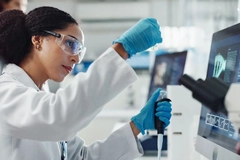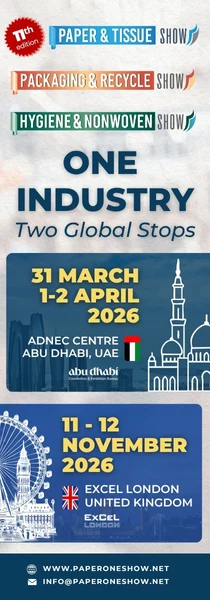Greiner Packaging highlights PPWR-ready solutions at Future Packaging Day 2025
Key takeaways
- Greiner Packaging is pushing circular design, sustainable materials, and customer co-creation to stay ahead of the PPWR.
- Future Packaging Day 2025 drives collaboration by showcasing innovations and hosting targeted breakout sessions.
- The company aims for major CO2 reductions and a fully PPWR-ready, highly recyclable packaging portfolio.
 Jörg Sabo, global director for Marketing & Innovation at Greiner Packaging (All image credits: Greiner Packaging).
Jörg Sabo, global director for Marketing & Innovation at Greiner Packaging (All image credits: Greiner Packaging).Greiner Packaging is building a packaging portfolio that will be ready when market demand and regulatory clarity converge, according to Jörg Sabo, global director for Marketing & Innovation at Greiner Packaging.
Under the theme “Navigating change, creating impact,” Greiner hosted its Future Packaging Day 2025, showcasing the latest product innovations across its packaging range. The event took place at the company’s R&D hub in Oberwaltersdorf, Austria, and was attended by value chain leaders who explored emerging trends and what is next for the industry.
At the event, Packaging Insights interviewed Sabo to discuss Greiner Packaging’s innovation progress, how the company tackles regulatory shifts, and its ambitions for the upcoming year.
How is Greiner translating this year’s theme into concrete packaging solutions and innovation?
Sabo: The regulatory landscape, customer expectations, cost pressure — none of this is getting easier. But we believe that innovation thrives exactly in these moments of change.
We translate the theme into action in three very concrete ways:
1. Designing for circularity as the new standard: Every new development follows circular design principles aligned with the Packaging and Packaging Waste Regulation (PPWR) and the European Committee for Standardization. This drives solutions like K3 r100, our self-separating cardboard-plastic packaging, and our new thermoformed IML concepts that achieve premium decoration with true recyclability.
2. Investing early in the right materials and technologies: Even in times when regulatory clarity was missing, we invested in monomaterials, recycled content, and renewable solutions — knowing that customers will need them as the rules tighten. These early moves now give us a head start.
3. Co-creating with our customers and partners: Future Packaging Day itself is a platform for this. We showcase everything from market-ready products to early prototypes in our theme islands. And through our breakout sessions, we engage directly with the diverse needs of our customers — because real impact happens when we shape solutions together.
How is Greiner adapting to stay ahead of major regulatory shifts such as the PPWR?
Sabo: For us, sustainability has always been an opportunity, not a compliance task.
That’s why we joined the Ellen MacArthur Foundation (EMAF) and other circular-economy initiatives years before legislation like the PPWR was even being drafted.
One of the biggest challenges in those early years was setting meaningful targets. The EMAF community helped us with this — even though we now know that many of these targets were extremely ambitious and were set at a time when measurement frameworks didn’t yet exist. Setting goals without knowing how progress will be assessed is always tricky, and the uncertainty has been difficult at times.
Our portfolio is broad, in materials and technologies, which makes forward planning complex. Developing new solutions without full clarity on future regulatory expectations is challenging. And working on innovations that increase cost, while knowing that customers may not adopt them until 2028 or later, is not an easy journey.
But this is exactly where opportunity lies: by investing early, by staying committed to circularity, and by adapting proactively, we are building a portfolio that will be ready when the market demand and regulatory clarity finally converge.
It makes a difference if a company has a vision in terms of sustainability or if it just wants to be compliant.
How does Future Packaging Day 2025 serve as a platform for advancing collaborations, and what were your key expected outcomes?
Sabo: For many years, the intention behind Future Packaging Day (formerly known as Innovation Day) has been to take our customers out of their daily business for one day and offer true inspiration for the future.
This year, we designed the event to go even further: alongside our established keynote sessions, we are offering tailored breakout sessions to meet the diverse curiosity and knowledge needs of our customers as precisely as possible.
We are also showcasing our newest product developments in dedicated “theme islands,” ranging from market-ready solutions to very early prototypes. This gives our partners full transparency into where we are heading and invites them to actively shape that journey with us. Value chain leaders explored emerging trends and what is next for the industry at the Future Packaging Day 2025.
Value chain leaders explored emerging trends and what is next for the industry at the Future Packaging Day 2025.
Ultimately, the event is about collaboration. By talking openly, exchanging perspectives, and exploring options together, we can co-create the packaging solutions of tomorrow. Because at the end of the day, it is our customers who decide what the final packaging should look like. Our role is to advise, to inspire, and to offer a broad range of solutions and pathways that help them make the best possible decisions.
The breakout sessions allowed attendees to engage deeply with topics. Which breakout topic were you most excited about?
Sabo: We designed the breakout sessions to reflect the diversity of our customers. The topics included:
- Packaging conformity assessment with PPWR — a preview
- Smart packaging optimization
- K3 r100 in action
- Material matters
- Tracking your impact
- Digital traceability for optimized plastic circular economies.
We have seen that the biggest interest is the topic of smart packaging optimization.
Looking to the future: what is one bold ambition that Greiner has set for packaging?
Sabo: One bold ambition, which goes beyond regulations, is that the Greiner Group has committed to the Science Based Targets initiative, which means our CO2 reduction goals are aligned with the 1.5 degrees Celsius pathway of the Paris Agreement.
- 60% absolute reduction in Scope 1 & 2 emissions by 2030 (base year 2021)
- 25% reduction in selected Scope 3 emissions by 2030.
Greiner received EcoVadis Platinum status — among the top 1% of companies globally in sustainability performance.
Scope 3 remains the major challenge, as expected for a materials-intensive industry.
Meanwhile, Greiner Packaging aims to make its entire portfolio fully PPWR-ready by:
- Maximizing recyclability and closed-loop compatibility
- Reducing material use and optimizing packaging design
- Expanding reusable packaging systems and solutions
- Integrating sufficient recyclates and managing feedstock availability
- Collaborating with brand owners to enable compliant, sustainable portfolios
- Measuring progress: Track metrics such as recyclability scores, share of reusable packaging, recycled content usage, and successful collaboration projects with customers.










